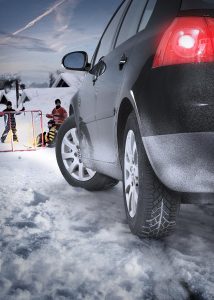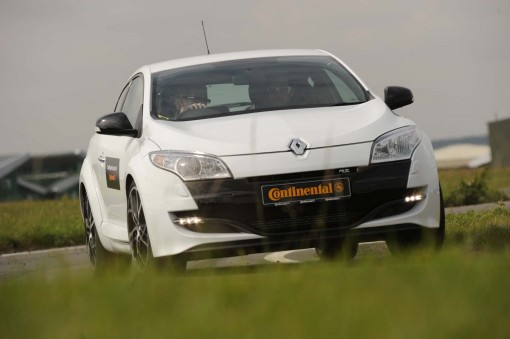Winter tyres – could you use them all year round?
With winter just around the corner, have you thought about ordering a set of winter tyres – and could you use them all year round? Motoring journalist Tom Scanlan investigates.
THE tyre industry is standing by for an onslaught of orders for winter tyres.
At a “brand evaluation” day at MIRA – the Motor Industry Research Association – leading premium tyre-makers, Continental, told journalists and suppliers that, if we get another winter like the last two, it’ll be shoulder-to-shoulder for orders for winter tyres.
In fact, says Continental, now is the time to get your order in.
But why should we bother? Don’t ordinary tyres do the job? Well of course they do, up to a point, but winter tyres are made from a different compound that work better at lower temperatures, around seven degrees and below. They have a different tread pattern that deals better with snow, and here’s the clever bit – this can use the snow itself to help clear a pathway, like kids building a big snowball by rolling a little one over the grass until it builds up.
Continental also gave us a chance to experience the difference between driving on wet, slippery surfaces on a non-winter Chinese budget tyre compared to one of their own non-winter brands. Identical cars were on hand to drive round a circular track simulating a roundabout. The point at which the budget tyres lost traction was around 25 mph; the Contis held on until about 32 mph and generally provided much more feel to let you know when things were beginning to go.
Continental then took us onto a tread-depth comparison test. The legal minimum tread depth in Britain is 1.6mm. New tyres have 8mm.
For this test, we went out onto a straight but very wet stretch at MIRA on the 1.6mm tyres; at 50 mph, my instructor said hit the ABS brakes as hard as possible. Standstill took nearly 49 metres.
I did this again on tyres with 3mm (the depth that the tyre industry recommend as the minimum) and finally on new 8mm tyres.
Each braking distance was measured digitally in the car and the results proved very revealing. In brief, where the car came to a dead stop from 50mph on new tyres was at the same point that the car was still travelling at nearly 30mph on the still-legal, 1.6mm tread tyres. The overall stopping distance on new tyres was around 12 metres shorter; and the 3mm tyres outperformed the 1.6mm by nearly nine metres. It doesn’t take much to imagine a child running out into the road at a bad moment to work out the tragedy that could happen simply because of a lack of tyre tread.
 Continental’s evaluation day threw up some intriguing questions: what does it cost to chuck tyres away at the industry’s recommended 3mm point? There’s still plenty of life left between the 3mm and 1.6mm points, thousands of miles, in fact. However, Continental work out that the overall cost may be around only £25.
Continental’s evaluation day threw up some intriguing questions: what does it cost to chuck tyres away at the industry’s recommended 3mm point? There’s still plenty of life left between the 3mm and 1.6mm points, thousands of miles, in fact. However, Continental work out that the overall cost may be around only £25.
Then there’s the choice between premium brands and budget. Budget tyres will perform well enough up to a point, but you get what you pay for; in simple terms, about 70% of the performance, because you’ve paid that much less for the tyres.
And, possibly the real poser: why not use winter tyres all-year-round?
It IS possible, but winters will not perform quite so well as ‘ordinary’ tyres in warmer conditions, maybe 2% less grip, and they may be a bit noisier in cars that have less protection from noise transference.
With tyres, there’s always a compromise. Tyre-makers themselves, working with car manufacturers on the handling, comfort, noise, grip and even looks of a tyre always have to compromise somewhere. Drivers, too, must compromise, but differently, with our questions led by the balance between what we can afford and how safe we want to be.
You are strongly advised to tell your insurance company if you put winter tyres onto your car. There should be no problem with this, although, last winter, there were stories of some insurers charging extra, either as a sort of penalty, quite obviously lacking the understanding of the ability of winter tyres, or of charging an admin fee for having to change the documentation.
Look at your car’s handbook to check on advice on changing to winter tyres and possibly, at the same time, to a set of wheels to put them on. Then, if you have a problem with your insurance company, you can tell them what the official line, as written in the handbook, is. However, the handbook will probably only approve the best-known, non-budget makes, so you may have to pay more rather than less. The handbook for our family car, an old Jaguar S-type, recommends either one of two types of Pirelli, or Continental Winter Contact. I have gone for the Contis and am able to keep the ‘summer’ tyres at home for the time being, until it warms up again towards next spring. The alternative, if you don’t have the space at home, is that the tyre fitting firm will ‘hotel’ your tyres for you, although this will cost varying amounts of money. A typical charge would be £40, including re-fitting the tyres.
The bottom line: latest construction techniques and high-tech materials mean that winter tyres can perform really well in all conditions – even warm, dry weather – but excel when temperatures fall. These cold weather tyres use a higher proportion of natural rubber in the tread, minimising the hardening effect at low temperatures and giving improved traction performance in temperatures below 7 deg C. Braking distances are significantly reduced: if you are driving at around 20 mph, a car shod with winter tyres could stop three car lengths shorter than a car wearing non-winter rubber.

